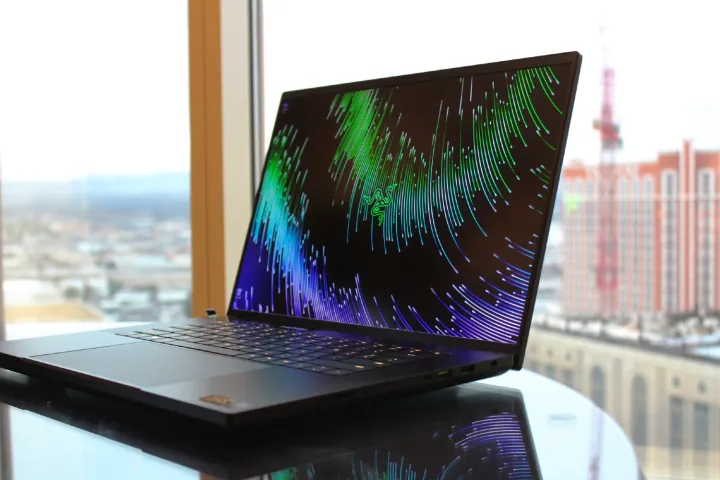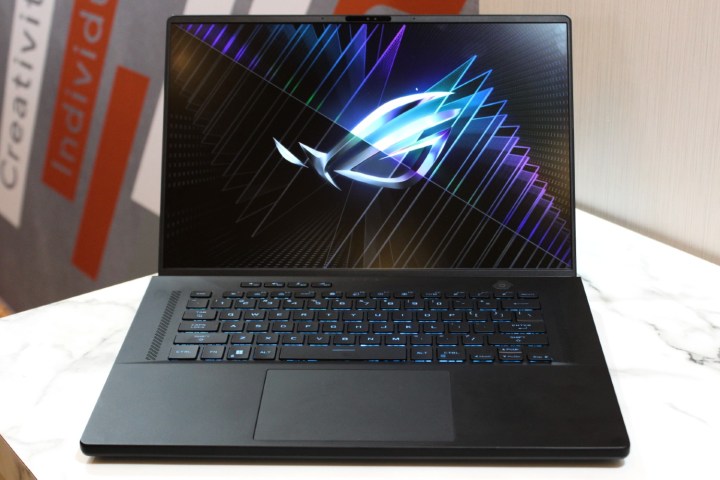It’s assumed that with every new year, our tech will improve. But in 2023, gaming laptops aren’t just inching forward — they’re making a big leap.
Regardless of what brand of gaming laptop you prefer, you’ll likely see major improvements in key areas like performance, battery life, and display quality — and that’s great news if you’re looking to buy in 2023. While it may be a few months before some of these models are available to purchase, they’ll be worth the wait. Here are three reasons to but a gaming laptop in 2023.
RTX 4090s everywhere

Nvidia announced its RTX 40-series mobile graphics at CES 2023, and that includes a new highest tier for laptops in the RTX 4090. Names of GPUs are just names, but clearly, Nvidia thinks its can deliver enough performance to justify calling this laptop card an “RTX 4090.”
But beyond the raw performance and new features of this new GPU, it’s going to be more widespread than a top-end card has ever been before. Most notably, the RTX 4090 is going to end up in more compact gaming laptops than ever, including 14-inchers. In the past, the Razer Blade 14 was the only 14-inch gaming laptop that could be configured up to the most powerful graphics (the RTX 3080 Ti at the time). Other 14-inch laptops (whether gaming or not) were often capped at an RTX 3050 Ti or RTX 3060.
Now, though, that’s all going to change. Plenty of compact 14-inch laptops will be coming out in 2023 and will have an RTX 4090. The updated ROG Zephyrus G14 is a great example. This popular little gaming laptop is now offering configurations up to an RTX 4090, which should greatly expand the kind of performance you can expect out of it. Just how powerful these systems will be is to be determined (and will likely vary from laptop to laptop), but we can expect small laptops get a big boost in 2023.
HDR galore

HDR has long been a sore spot in PC gaming. The transition to more advanced backlighting like mini-LED or OLED in the world of PCs has been painfully slow. And that means proper HDR performance has been inaccessible to PC gamers, outside of plugging your PC into a television.
But now, many high-end gaming laptops are finally offering mini-LED as a configuration option. That includes the Razer Blade 16, ROG Zephyrus M16, and many more. With over 1,000 local dimming zones and 1,100 nits of peak brightness, these new gaming laptops should provide some solid HDR performance in games. These new mini-LED panels are high resolution and high refresh rate too — in terms of visuals, there’s really no downside.
Last year, we saw just a couple of high-end gaming laptops embrace high-refresh rate OLED, limited to only the Razer Blade 15 and MSI Raider GE67 HX. The rate of adoption for mini-LED is already much larger, and considering how much brighter these panels are, there’s finally reason to get excited about HDR gaming on laptops.
MUX Switches and Advanced Optimus

There are a couple of other features you’ll see in almost every gaming laptop in 2023, and they should help with battery life. MUX switches are nothing new — and neither is Nvidia’s Advanced Optimus. But in 2023, these two features are more widespread than ever, and they work in tandem to improve battery life by helping laptops switch between integrated and discrete graphics.
The MUX switch is the hardware component that physically toggles the adapter that connects the display from the integrated graphics and the discrete graphics. Nvidia’s Advanced Optimus is the software side of the equation — it automatically (and hopefully intelligently) detects which graphics the application you’re running needs. The point is to optimize battery life, since you really don’t want to be running your heavy RTX GPU while you’re writing in Microsoft Word.
These technologies will be even more important if you do opt for one these more advanced displays and high refresh rates, which hurt can battery life on gaming laptops that already don’t last very long. And in 2023, it’s no longer a premium feature reserved for the most expensive gaming laptops — and that’s really great to see.



